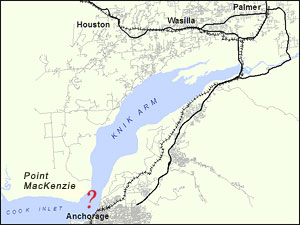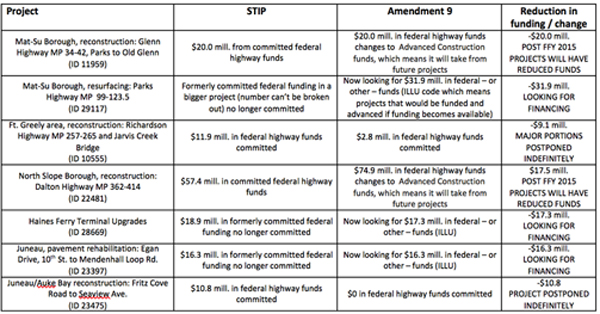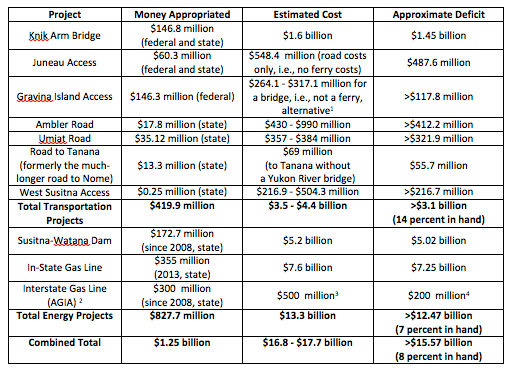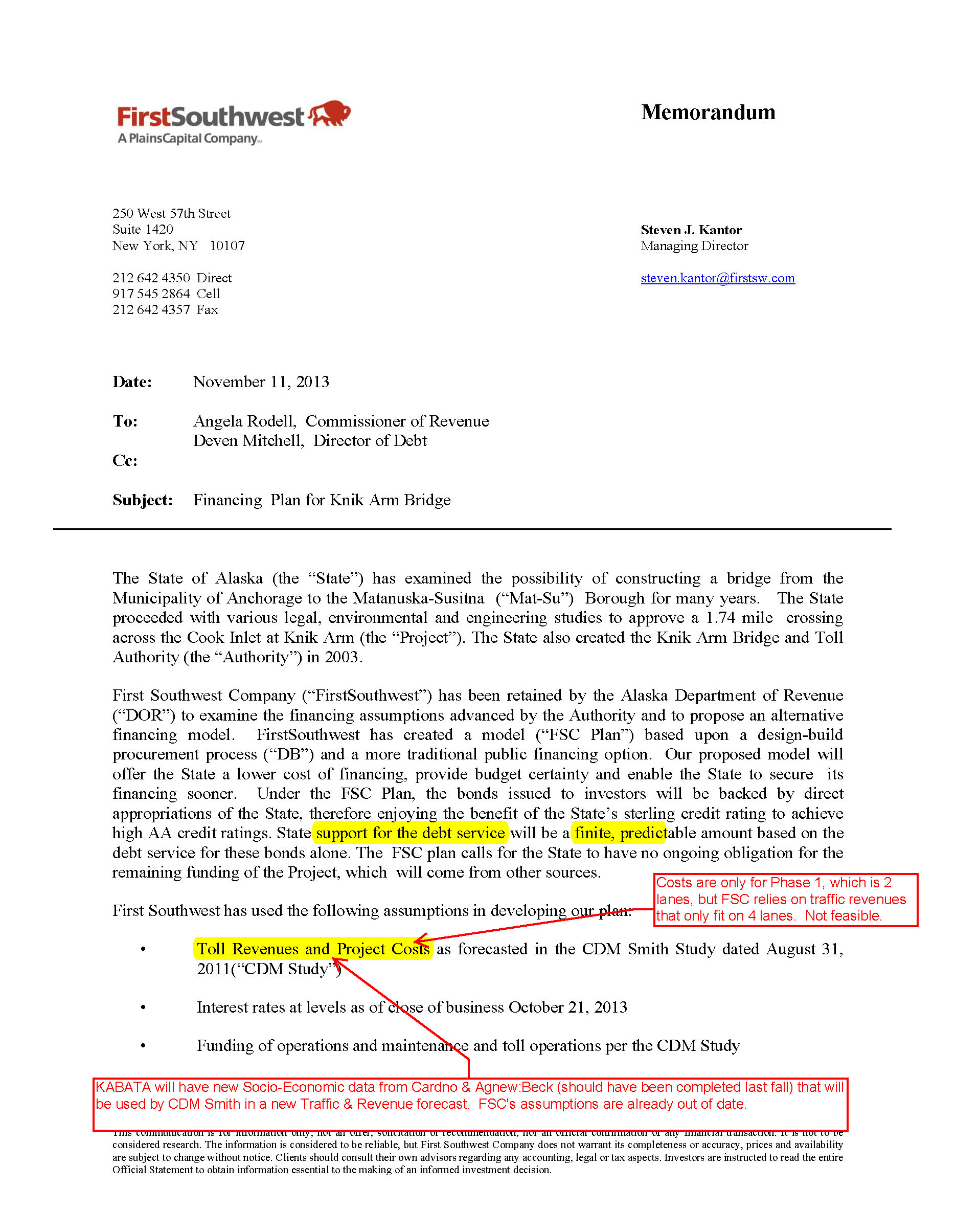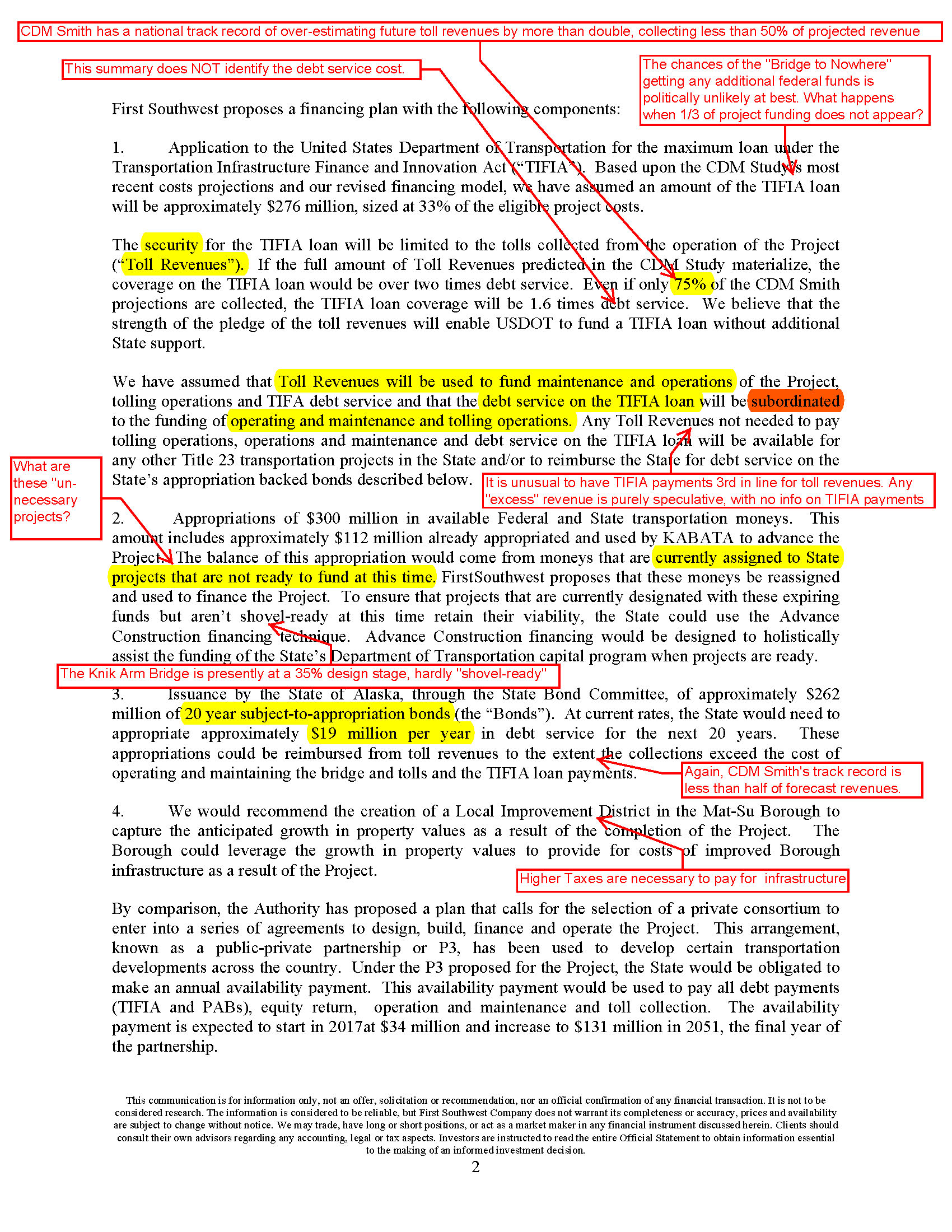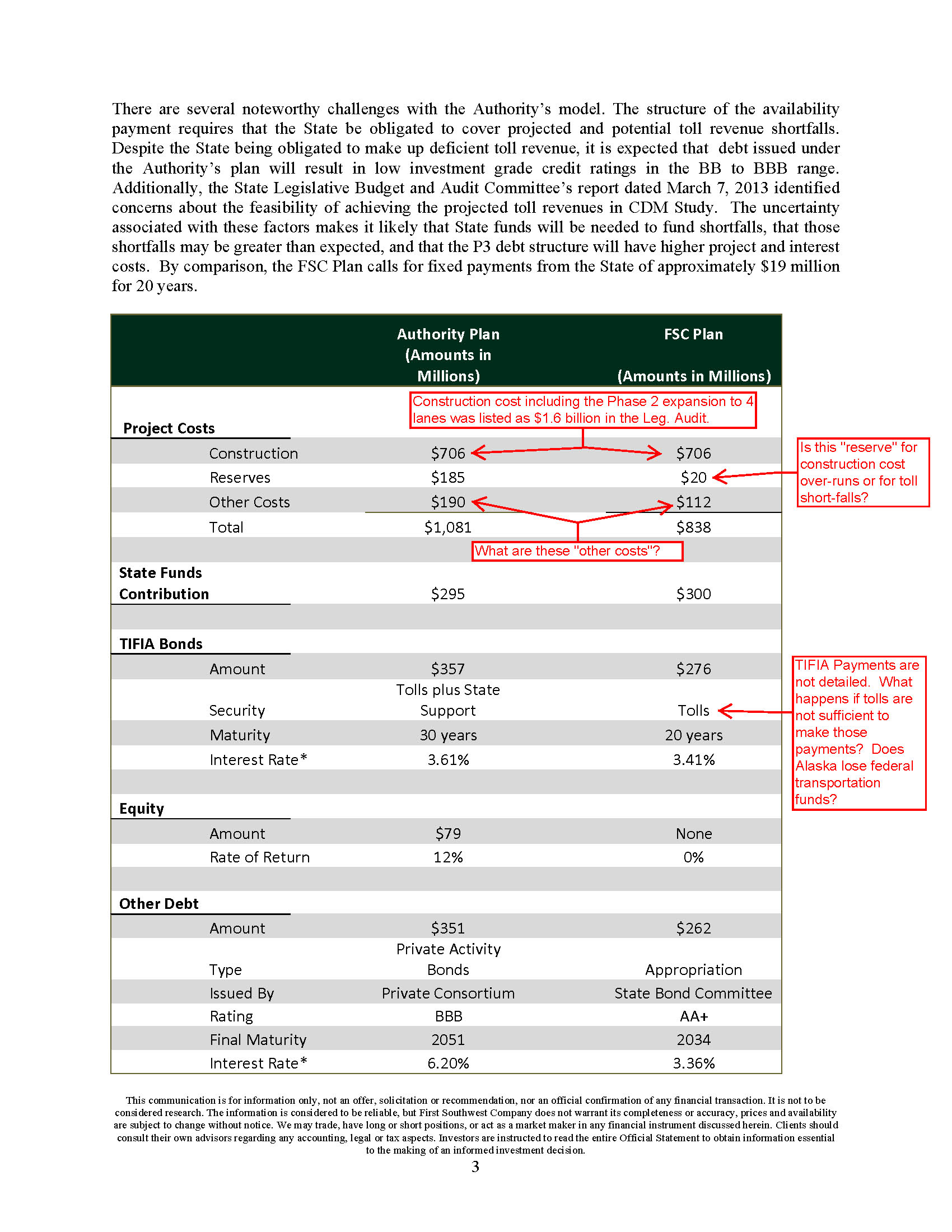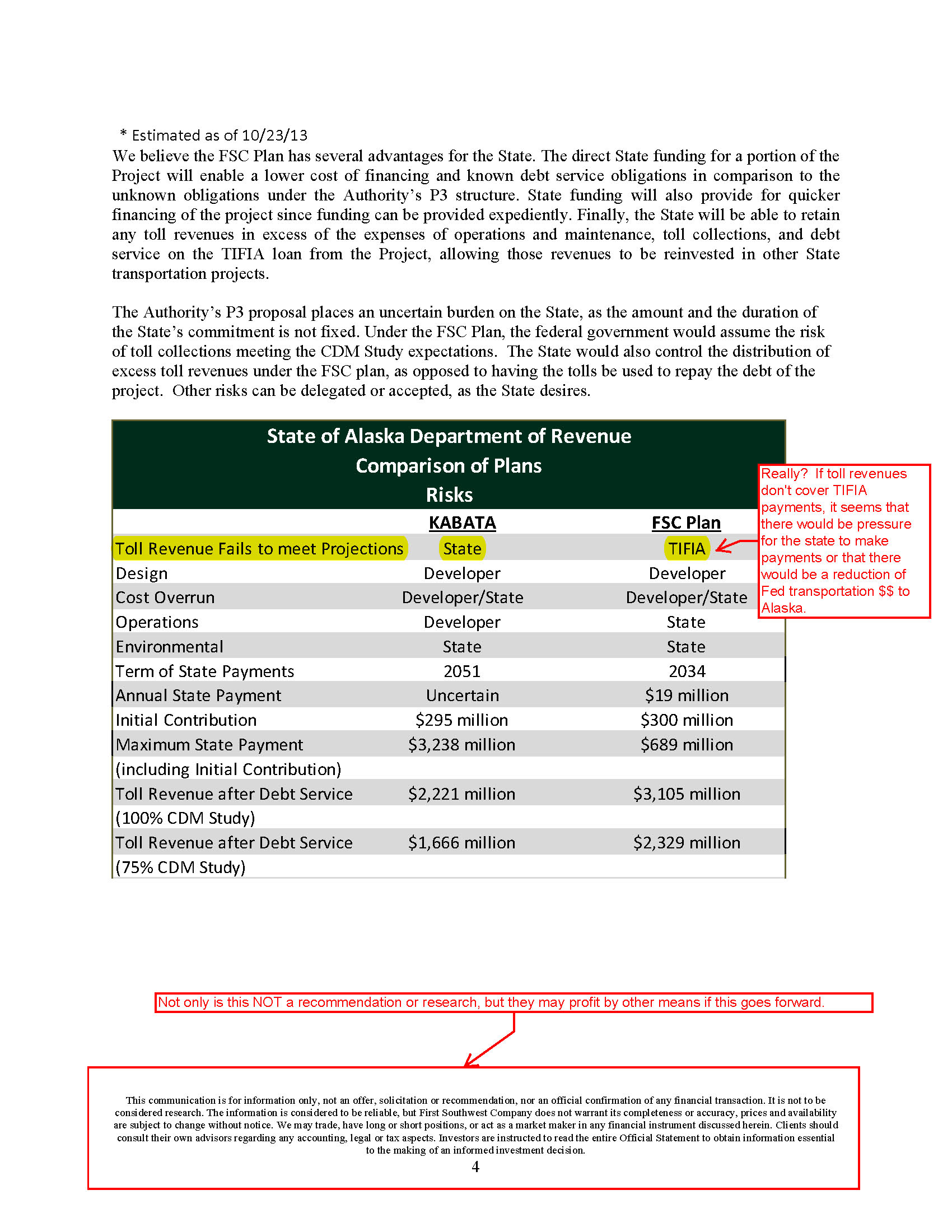For the first time, a bill passed the legislature that will provide major state funding for the project contingent upon approval of a difficult-to-get $300 million federal TIFIA loan.
However, the project’s progress came at a price. CS HB 23 - OR archived copy here passed on the last day of session. The bill shifts all project management – bonding, permitting, and right of way acquisition – to the state Department of Transportation and Public Facilities (ADOT&PF). KABATA’s sole remaining function will be to collect tolls. For that reason, key legislators have openly implied that KABATA will be abolished next session.
But for 2 missing pro-bridge votes in the House [ Dead link- this article is no longer online ], the state indirect guarantee for both the proposed $300 million state loan and an up to $500 million KABATA loan or bond to repay TIFIA, would have passed and KABATA would have remained in charge of the project.
A House-Senate conference committee chaired by retiring Representative Alan Austerman (R-Kodiak) then produced a drastically different bill that removed all indirect moral obligation language behind the proposed TIFIA loan that was in the Senate version. Now only tolls and not the state, stand behind the proposed TIFIA loan.
The final House approval of the new bill showed past bridge critics such as Republicans Reps Feige, Hawker, and Costello returning to the majority. As a result, the overwhelming House approval reflected the majority-minority split with only Democrats in the minority voting No. For futher details, see this Alaska Journal of Commerce article - OR archived copy here and this Frontiersman article - OR archived copy here.
The legislature also passed a state capital budget with $55 million for the project, $5 million new money from the state to match $50 million of expected federal funds, which is close to the previously allocated funds left over from the 2005 Federal Earmark for the project. The ADOT&PF is likely to use some of those funds in the coming year to contract with a design and engineering firm to take the current 35% design to an approximate 65% design. The 65% design level should produce a more refined cost estimate for the overall project than the $894 million number given the legislature in March.
However difficult it will be for the state to obtain a TFIA loan based only on toll revenue, this is the first time in four years that a bill was passed to potentially put the state’s credit behind the project by approving an up to $300 M state bond. One sign that the embattled project now looks more real than ever is that the last day decision of the legislature to back the project was front page news in the national publication Bond Buyer (behind paywall).
The bill now goes to the Governor who is expected to sign it and so put ADOT&PF in charge of the project on July 1, 2014.
The Shifting Battleground and Changed Schedule
With state support contingent upon a TIFIA loan for one-third of the project’s costs, the fate of the project now shifts from a political and priorities discussion among elected officials in the Alaska legislature to a more technical discussion of project credit worthiness between the state and TIFIA program officials at the federal Department of Transportation.
To submit its first stage federal “Letter of Interest” application, the state will now have to provide the feds with the socio-economic study, the revised traffic and toll revenue study, and the new financial plan that was promised to the legislature last year but was not provided this session. The one page ADOT&PF – KABATA financial plan - OR archived copy here that showed no amount for toll revenue or bond payments will obviously be insufficient for the project to be considered by TIFIA.
In his March 27, 2014 presentation to the Alaska Support Industry Alliance, KABATA Chair Michael Foster expressed great confidence that the TFIA loan would be approved if the Senate version of the HB23 passed. One state official has privately acknowledged that the socio-economic study to be done by Cardno and Agnew:Beck projecting population and jobs (an important first step in projecting traffic and toll revenues) has long been done but it would not be released by KABATA until after session. Even if the socio-economic study originally due 9/30/13 is finished, that study was to be used by KABATA’s discredited Revenue forecasting firm, CDM Smith to provide a revised traffic and toll study as the basis for a new financial plan.
State debt manager Deven Mitchell and the Department of Revenue and not KABATA will now work with ADOT&PF to provide that financial information to TIFIA and this administration oversight may push consideration of the loan into the next TIFIA round. Over $40 billion in projects were submitted to TIFIA [ Dead link- this information is no longer online ] for the round that started August, 2012 and TIFIA commitments made since then may use up all of this round’s funding before Alaska submits its revised application.
As a result, the fate of the project may well depend on the amount of funding in the next TIFIA around to be announced sometime after October 1, 2014. The TIFIA program has broad bi-partisan support but the program’s funding level is tied to the necessary renewal of the Highway Trust Fund. The Highway Trust fund - OR archived copy here has been described as the one piece of major legislation that both houses of congress will need to address prior to the November, 2014 elections.
Because states and private partners have had trouble coming up with the two-thirds funding necessary for major transportation projects, there has been some congressional discussion about allowing the TIFIA program to loan up to 50% of a project’s budget. Even if, as expected, TIFIA funds are higher in the next round than current levels, that possible change to 50% federal funding would result in the usual 5-8 projects being financed out of approximately 40 submitted each round. It is also likely that boosting TIFIA funds may cause a reduction in federal transportation dollars that provides 90% of the funding for the vast majority of Alaska’s transportation projects, as well as making up one third of the proposed funding for the Knik Arm Bridge.
So it is likely that by the time the newly elected legislature takes office in January, 2015, the Knik Arm bridge project will have been turned down for funding in the 2012 round or is awaiting a decision in the new round that can be launched no earlier than the new federal fiscal year Oct 1, 2014. If KABATA was still in charge, that scenario could have predictably led KABATA, a single project state agency, to push for full state funding.
Congress is expected to renew the Highway Trust Fund without raising federal fuel taxes; almost certainly they will not be raised prior to the November election. Because of a flattening out of miles driven nationally and improved vehicle mileage performance, states will continue to see a decline in federal formula funding. As a result, next year ADOT&PF with less federal formula funds, will probably have to identify projects that would be displaced or postponed indefinitely by the bridge. This year, ADOT&PF told legislators only that a bridge commitment would at most delay major projects by just 6 to 12 months.
Project optimists can hope that a federal TIFIA loan commitment before Spring 2015 could have ADOT&PF presenting a financial package to the legislature for approval during the next legislative session. Individuals who are skeptics of federal TIFIA funding for one of the “Bridges to Nowhere” and who are keen observers of the past pace of TIFIA credit decisions, predict a slower pace on the Bridge decision. In that scenario it will not be until the 2016 legislative session that the legislature will need to face up to either abandoning the project or fully funding the bridge at 100% using state funds.
